Wrecked and rated - I put five angle grinder resistant bike locks to the ultimate test
Armed with an angle grinder and just five minutes, I wanted to see which lock would crack first!
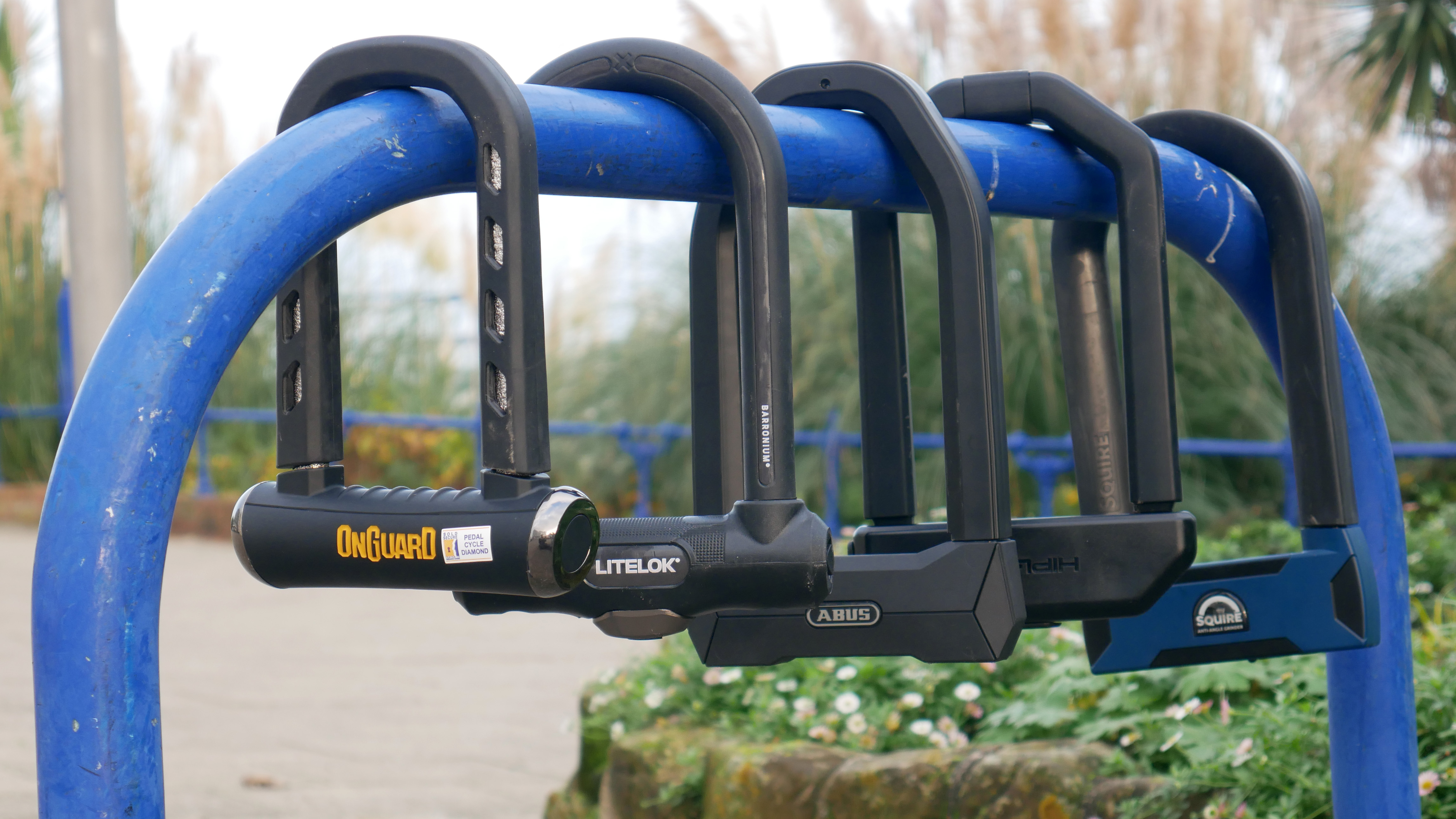
Hannah Bussey
I am sure that many of you, like me, don't want to rely on the best bicycle insurance to secure your bikes. You would rather your bike be where you left it every time. But even with one of the best bike locks and a high Sold Secure rating, the new breed of angle grinder-wielding bike thieves are able to remove locks in a matter of seconds—well, no longer.
Thanks to advancements in material technology, there are now half a dozen angle grinder-resistant bike locks on offer, five of which we have tested here. These highly secure locks are both reasonably lightweight and affordable, making them perfect for securing the best electric bikes; some even qualify as the best lightweight bike locks.
My testing was quite simple. If it claimed to be an angle grinder-resistant bike lock, I attacked it with one. I wanted to know how quickly it could be done, as, in reality, bike thieves often only have a few minutes to cut through the lock. You can read my full hypothesis, verdict, and how I tested at the bottom of this guide.
All five of the bike locks tested performed admirably and offered excellent resistance to angle grinders. However, one truly stood out and took me by complete surprise and by pure coincidence, it was the last to be attacked with the grinder. The OnGuard RockSolid had already impressed me, thanks to its low weight, low cost, and near-flawless function. But its ability to literally turn grinder discs to dust was quite remarkable.
Quick List
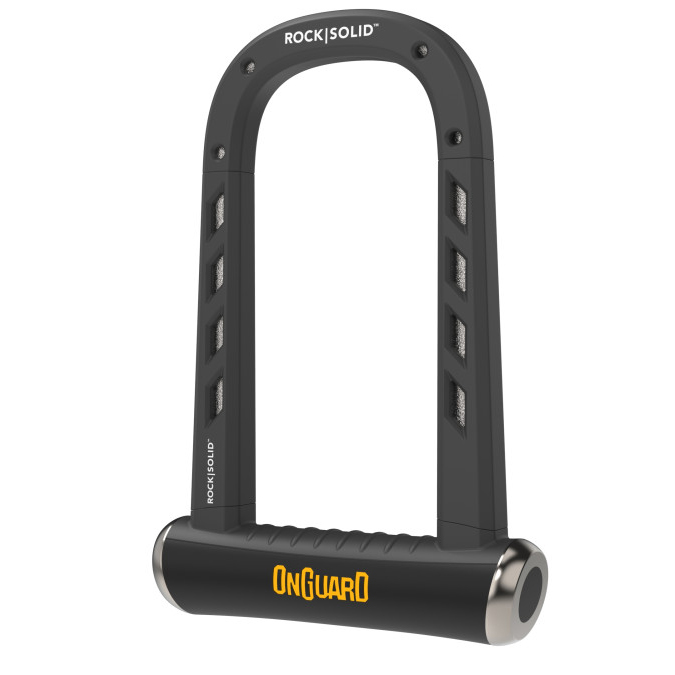
It is nearly unbelievable that the RockSoild 8590 weighs just 1.3kg/2.8 lbs, yet it is one of the most secure locks we have ever tested. It quite literally turns angle grinder-cutting discs to dust.
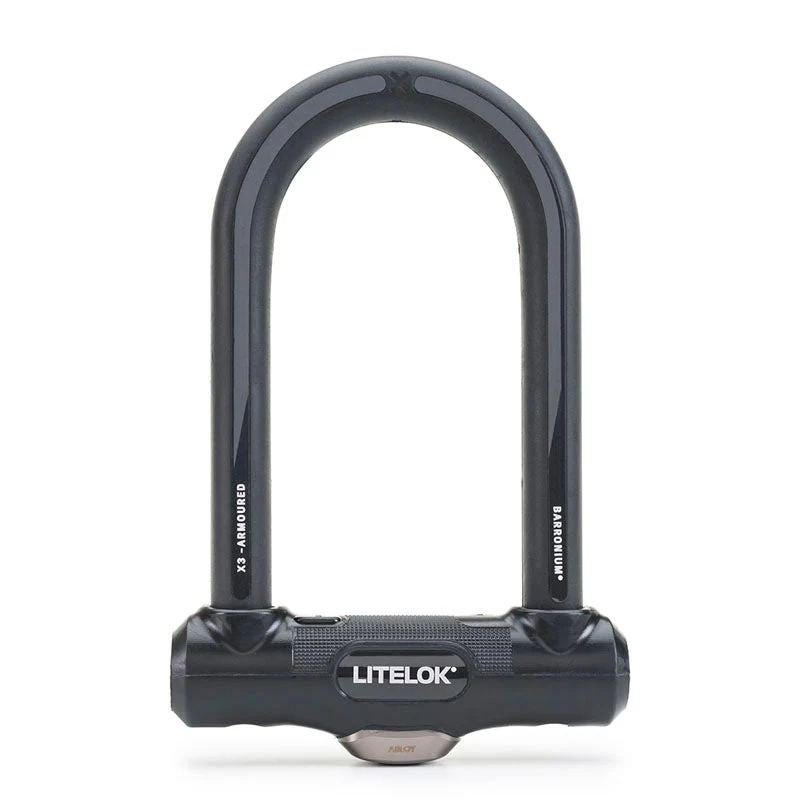
The Litelok X3 offers additional reach and features over its main rival, our eventual winner, the OnGuard RockSolid. It represents superb value, perfectly balancing weight, reach, and security.
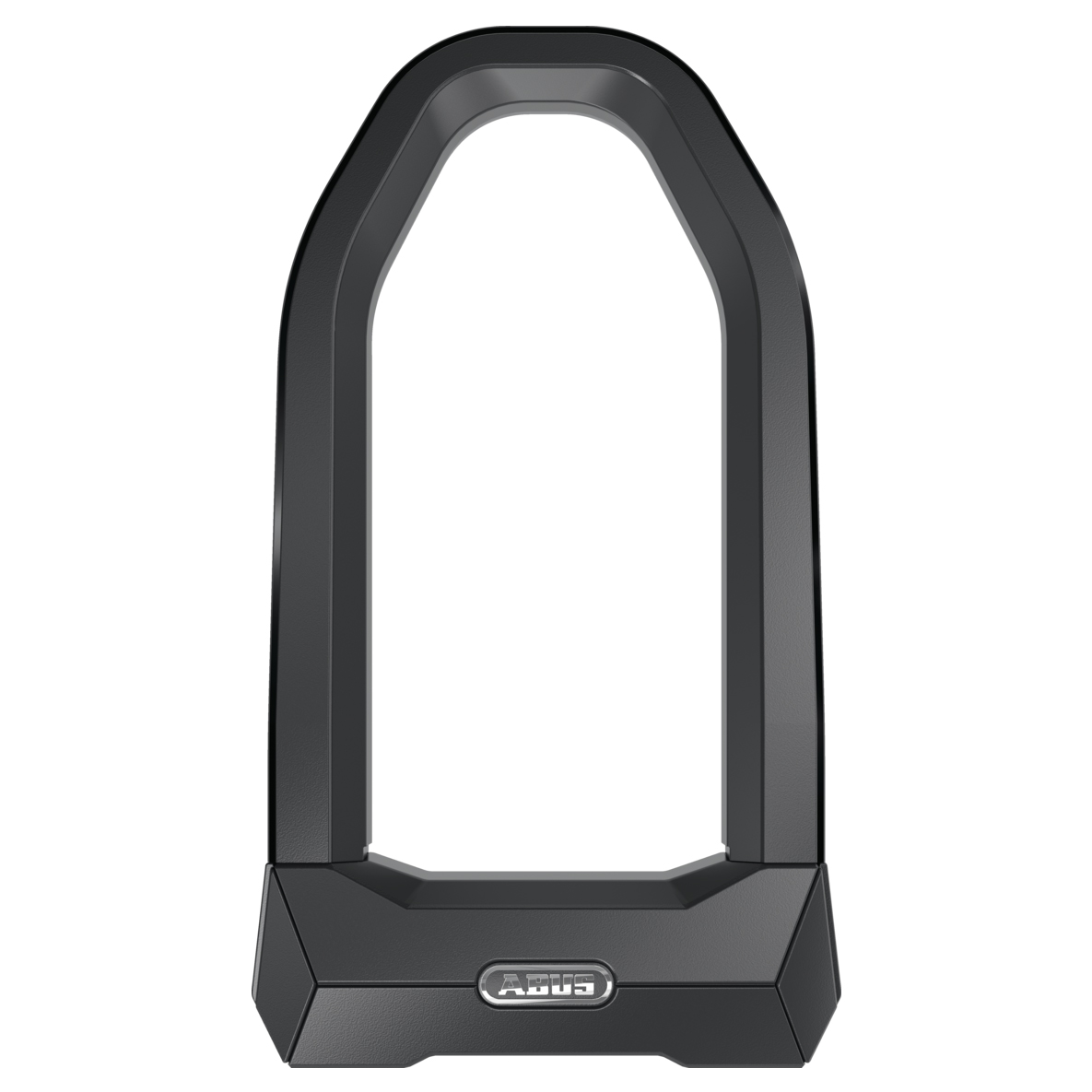
If you want to travel light, the Abus Granit SE is the easiest to transport on test thanks to its low weight and excellent mount. It also performed admirably when I attacked it with an angle grinder.
Wrecked and rated: the Best angle grinder resistant bike locks
Best Overall
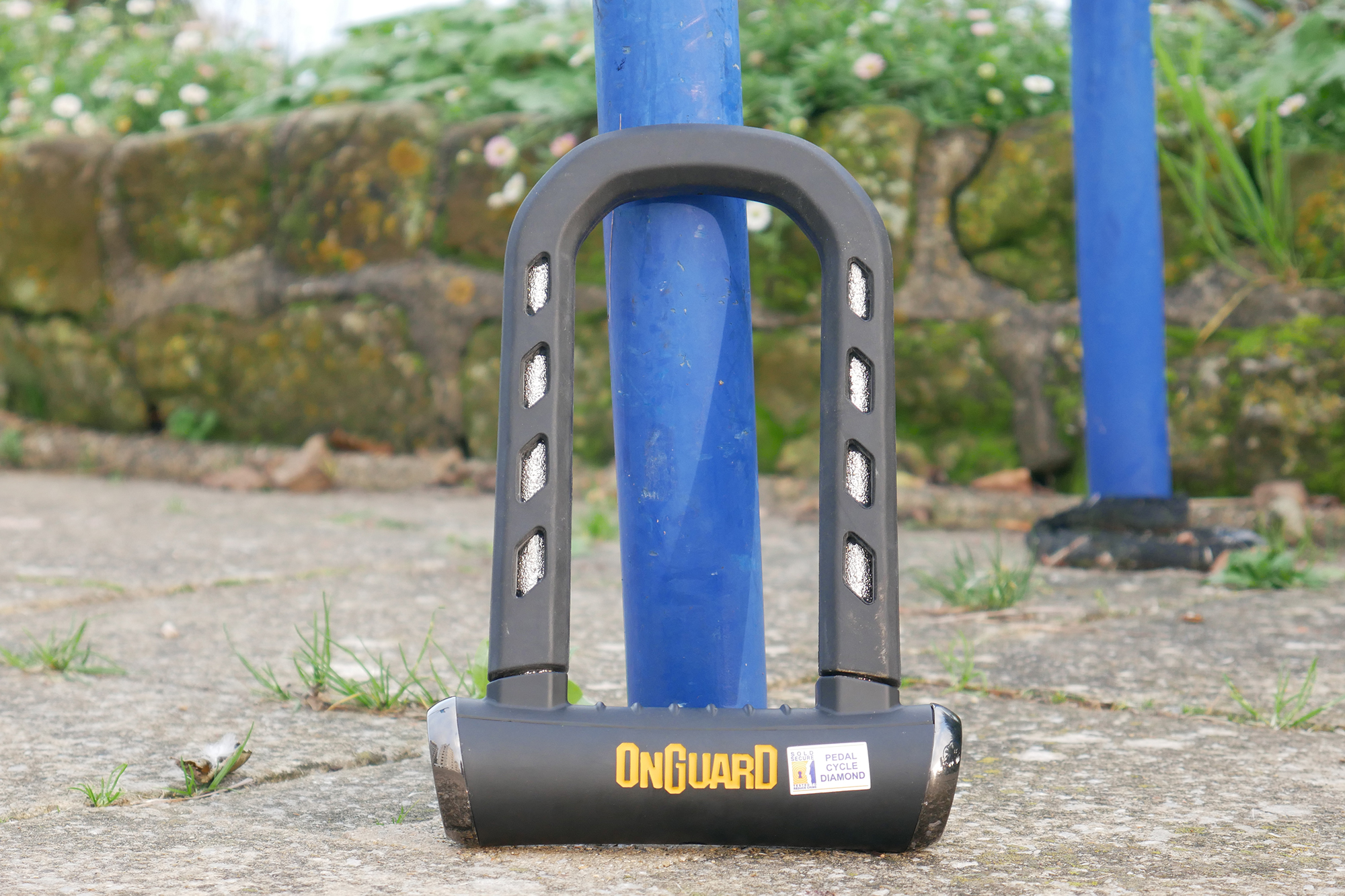
Our best overall angle grinder-resistant lock.
Specifications
Reasons to buy
Reasons to avoid
Proving to be virtually impenetrable, affordable, light, and small enough to fit in your pocket, it's no wonder that the OnGuard RockSolid 8590 bike lock was voted the best overall.
Gaining in-depth security wisdom from parent brand and security giant Magnum, this Sold Secure Diamond-rated OnGuard bike lock is, at 1.3kg/2.8 lbs, almost a whole kilo/2.2 lbs lighter than the similarly performing Abus Granit Super Extreme 2500.
There is a size compromise to be aware of; the RockSolid is the smallest on the test by a decent margin. With a maximum shackle of 17.5 cm/6.8 inches and an internal width of 9cm/3.5 inches, it has only 157cm²/61.8in² of potential locking volume.
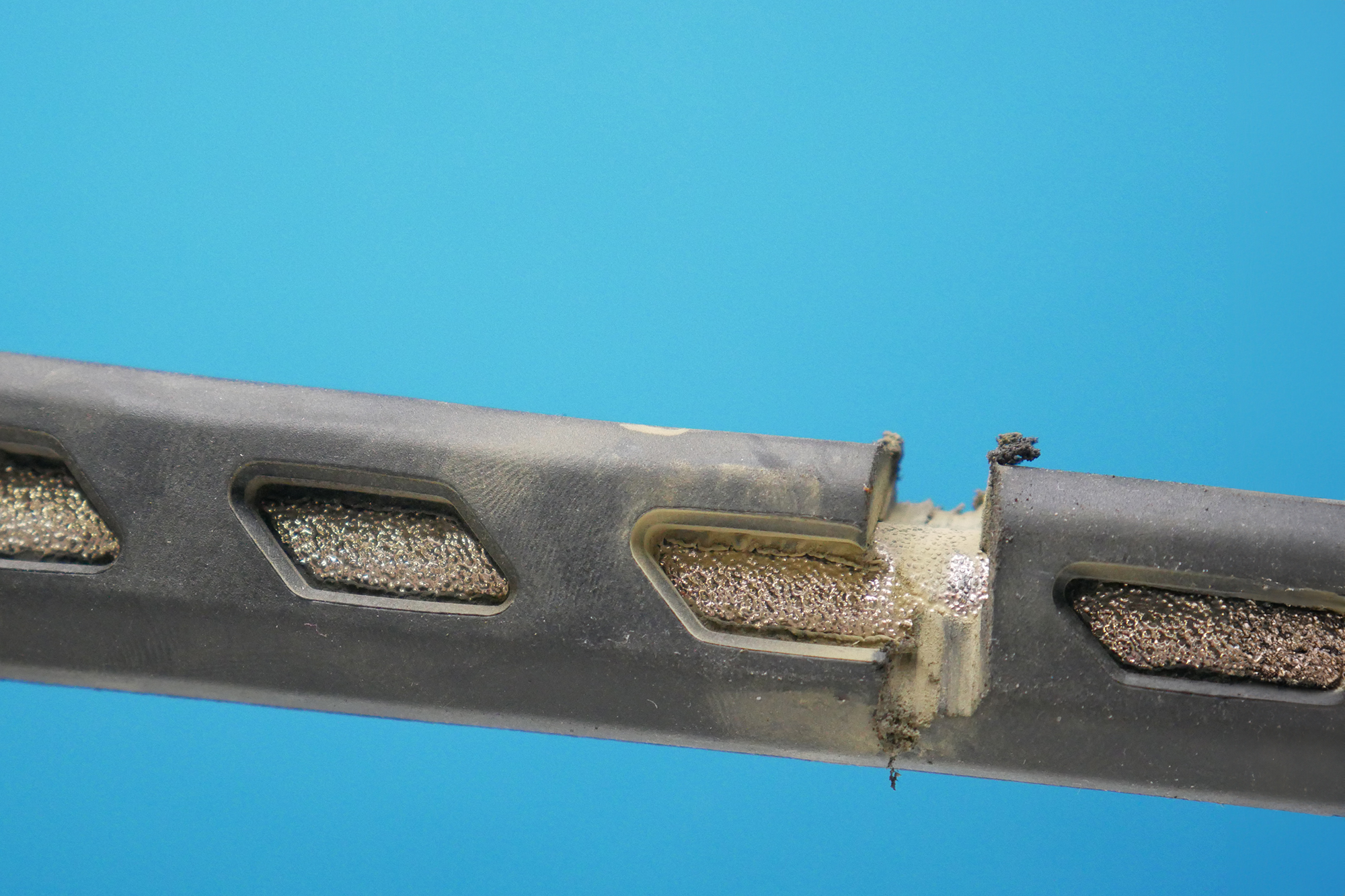
The only evidence of an attack by an angle grinder is the slight loss of rubber.
Boasting anti-pick, pull and drill protection, the key-operated lock mechanism is a force to be reckoned with, but it was OnGuard’s anti-grinder capability impressed us the most. On test, we burnt through three grinder discs, while barely making a scratch on the patented RockSolid rubberized surface finish of the hardened steel shackle. And that’s not all. It’s priced as one of the cheapest on test making this a crowd-pleaser with every security-conscious cyclist.
Read Matt's complete review of the OnGuard RockSolid 8590
Best all-round
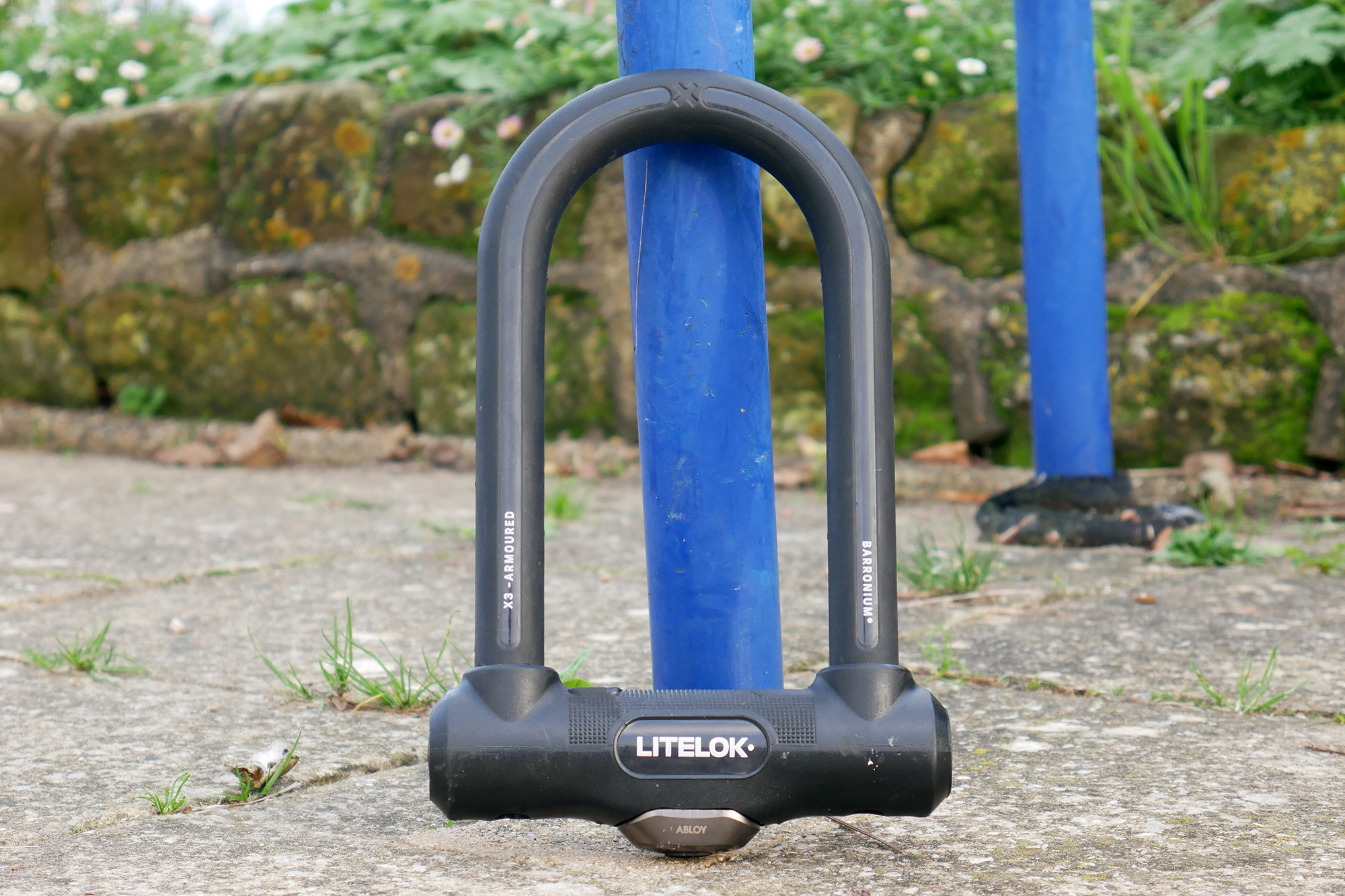
A well rounded lock that successfully balances cost, weight, reach and security.
Specifications
Reasons to buy
Reasons to avoid
Building on its first-hand experience of suffering bike thefts in London, the Litelok team specialises in material technology research, creating a composite it’s named Barronium. Described as a super hard ceramic material, it enabled the lock to withstand over two metal-graded grinder disc attacks. We only managed to penetrate 50 per cent of the shackle in a five-minute window, which should be more than enough to deter most thieves.
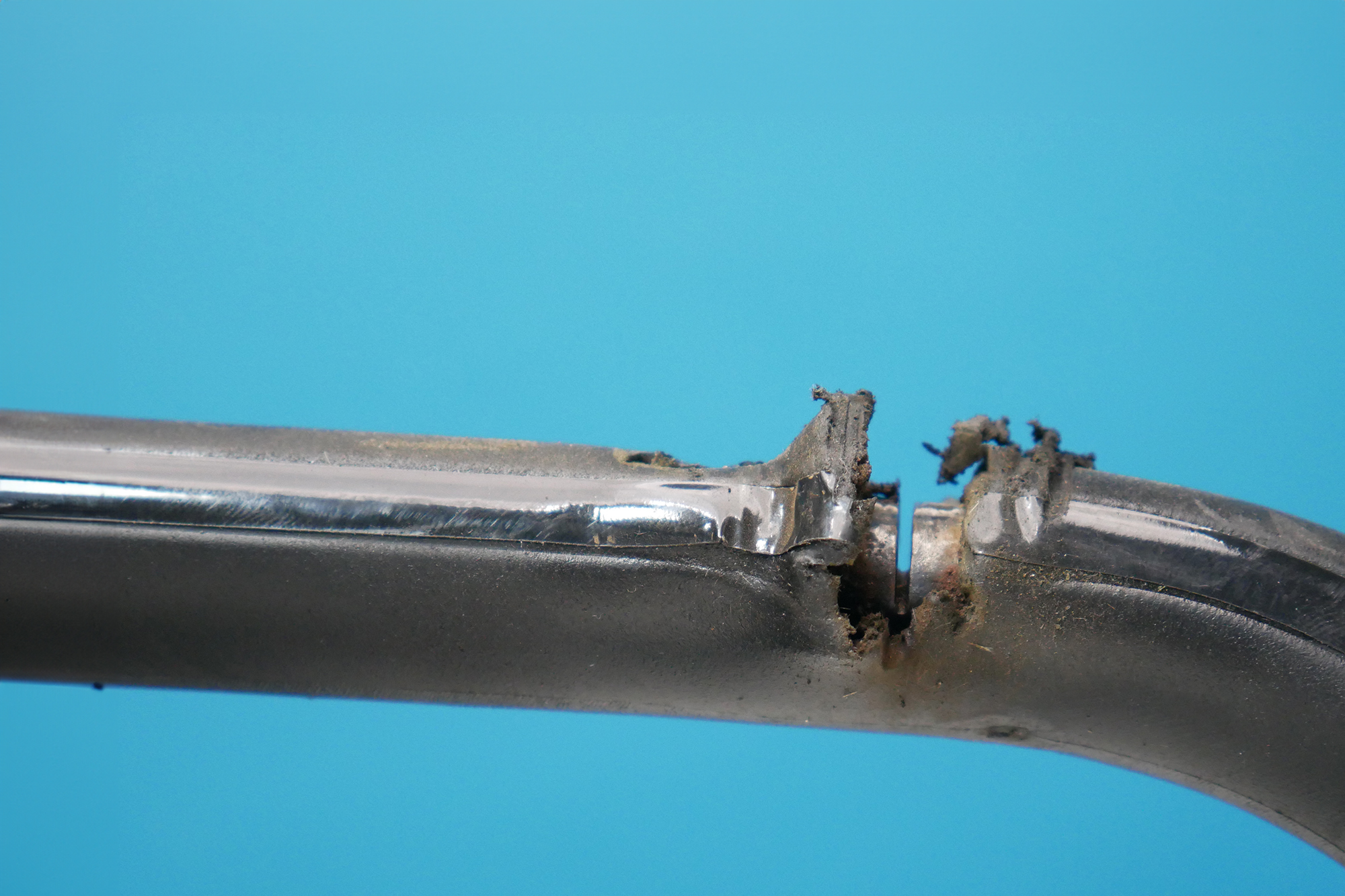
I really didn't get very far with the X3, putting up a formidable fight.
This strong structure has a weight penalty of around a kilo compared to the lightest Sold Secure diamond-rated bike lock we’ve tested, the OnGuard RockSolid 8590. However, it does come with extra reach. At 19.5cm/7.6 inches tall by 10cm/4 inches wide, this equates to 195 cm²/ 30.4in² of total space.
We also loved the LiteLok X3 silicone outer coating, which helps prevent frame scratches, as well as its neoprene storage sock. When the lock was in use, and I was off the bike, I repurposed the latter into a handy storage pouch for my riding gear.
It’s slightly more expensive than the OnGuard RockSoild 8590, which I awarded the best overall, but the Litelok X3 is likely better all-round value thanks to its greater reach and potential to mount on your bike - if of course you are happy to pay the extra cost.
Read Matt's complete review of the Litelok X3
Best Value
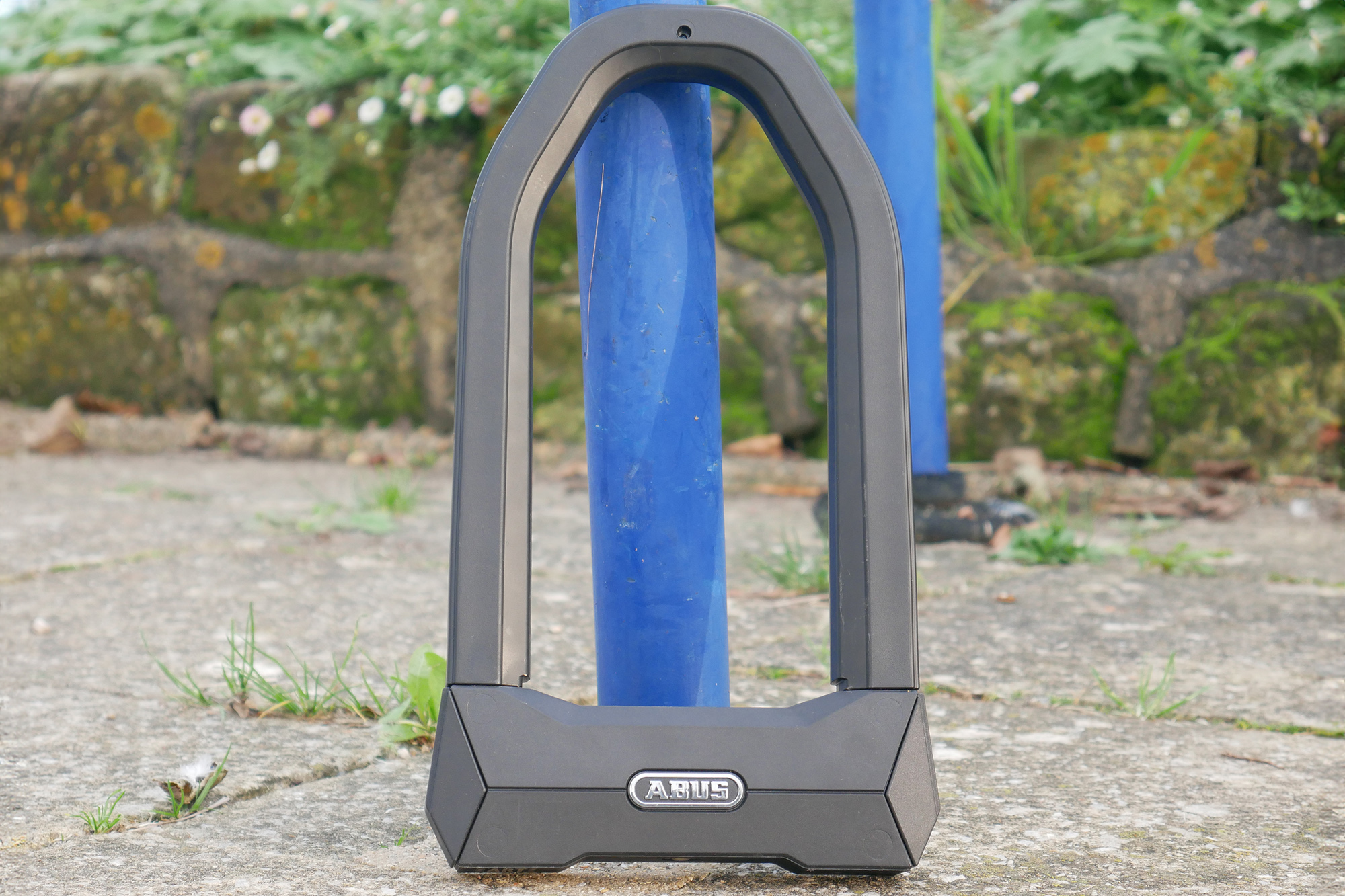
'Ein sehr hochsicherheits-fahrradschloss', I am sure you will agree.
Specifications
Reasons to buy
Reasons to avoid
Abus has constructed the Granit Super Extreme 2500 using tungsten carbide, which is a combination of tough tungsten steel and carbon composite materials, and as a result it the second-hardest known substance after diamonds. This Sold Secure diamond-rated lock withstood our five-minute angle grinder attack, with one metal-grade grinding disc managing to slice only halfway through the lock’s 27 mm square parabolic shackle. However, while this will likely deter most bike thieves, the more determined could, in theory, return for a second attempt.
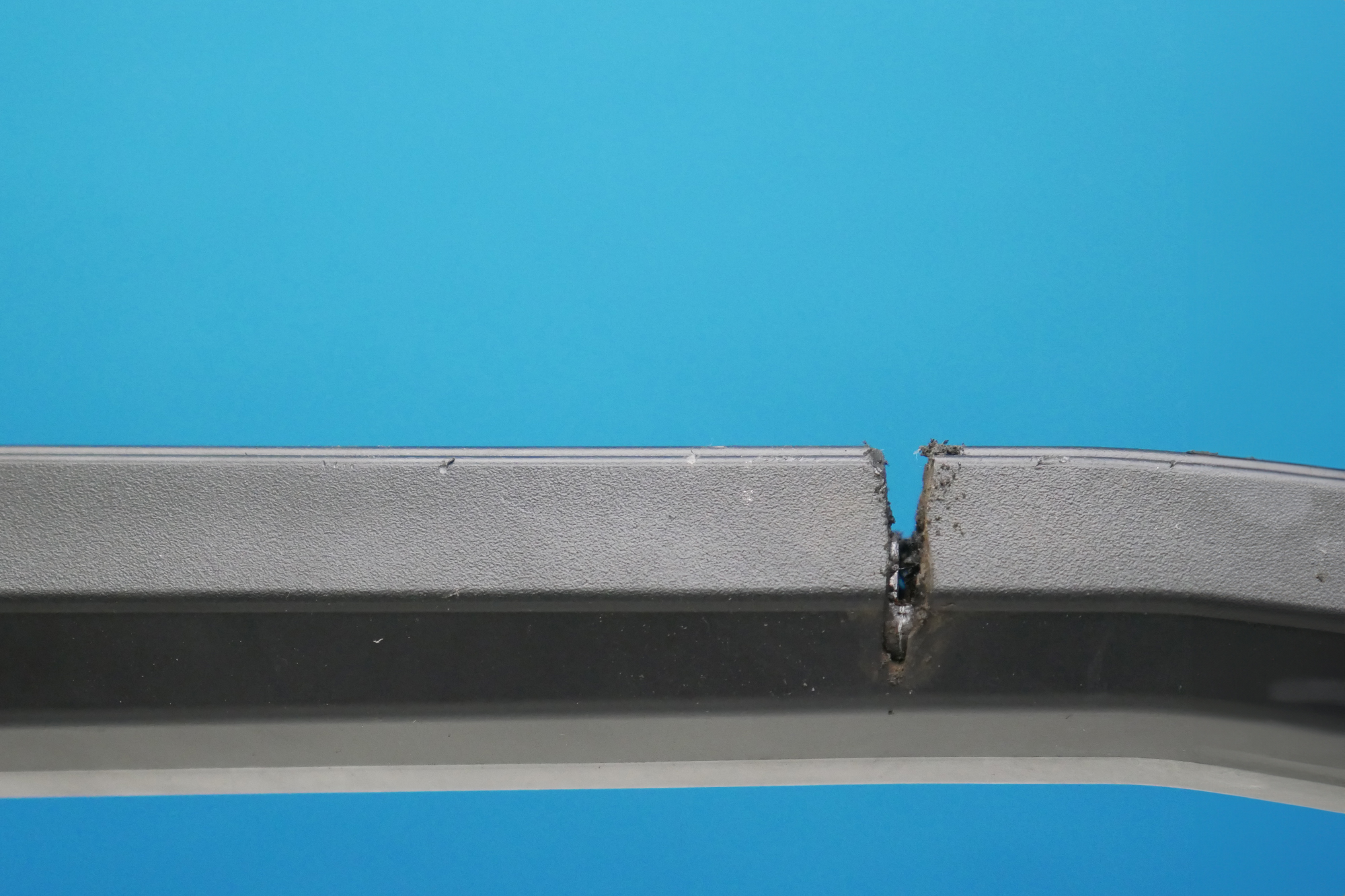
A clean cut but not one that troubled the Granit's security.
Besides its resistance to angle grinder attack, the Abus Granit Super Extreme 2500's biggest selling point is its locking area. Measuring 22cm/ 8.6 inches in height and 10cm/ 4 inches in width, it has a total usable capacity of 220 cm²/ 34.4in². Even when factoring in the width of a bike stand (5cm/2 inches), there was enough shackle to secure my e-bike’s beefy downtube.
Despite its extra size, the Granit weighs an impressive 2.1 kg/4.6 lbs. This makes the Abus 100g/3.5oz lighter than the smaller LiteLok X3. It is also impressively portable thanks to its versatile on-bike mount, which, unlike the X3, is included with the Granit SE.
While it is not the cheapest lock of its type, it is nowhere near the most expensive either. However, its extra reach, lightweight design, ease of transportation, and factoring in its decent performance against angle grinders make it an attractive bike lock for commuters, cargo bikes and e-bikes.
Read Matt's complete review of the Abus Granit Super Extreme 2500
Most Secure
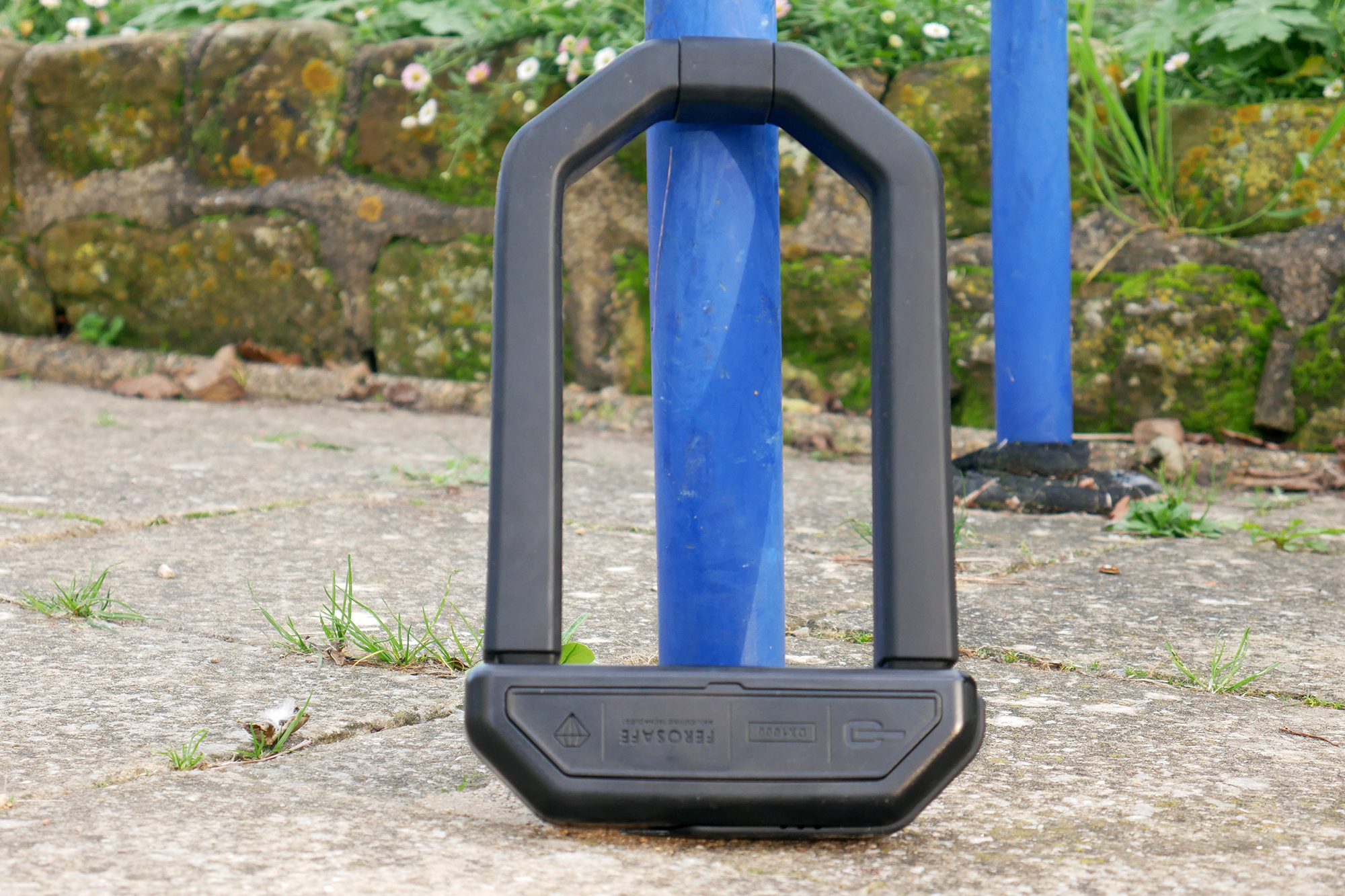
Thieves, if you spot a DX1000, don't bother, you're fighting a losing battle.
Specifications
Reasons to buy
Reasons to avoid
Hiplok has recently celebrated a quarter of a century in the bike lock business, and its experience clearly shows with the design and construction of the DX1000. This Sold Secure Diamond-rated lock has been created specifically for bikes with bulkier tubing profiles or for anyone requiring a larger shackle size - it measures 20.5cm/ 8 inches tall by 11cm/ 4.3 inches wide. This equates to a locking volume of around 225cm²/34.4 in², but don’t forget you'll need to take account of the object you’re locking to.
Built from a graphene-reinforced hardened steel, the shackle is then covered in a thick, soft rubber casing. This, combined with the extra length and Hiplok's claim of an unpickable lock, adds significant weight to the DX1000, which is comparatively heavy at 2.7kg/5.9 lbs.

Just when I thought I was winning, the Hiplok fought back and won.
I really rated the Hiplok DX1000's performance against the angle grinder. It burned out two metal-grade grinder disks in five minutes, matching the Litelok X3, and pretty much forced me to stop. I believe this was due to disc binding with the material in the lock's core. For safety reasons, with the grinder kickback, I couldn't continue to cut. It's certainly not something a thief is going to want to deal with, especially as they won't have the lock in a secure vice like I did.
Despite this performance, the DX1000 is the most expensive bike lock on test. That doesn't factor in the cost of the new mount, which I think is a worthwhile investment to transport about this nearly 3kg lock.
Read Matt's complete review of the Hiplok DX1000
Also on test - Honourable mention
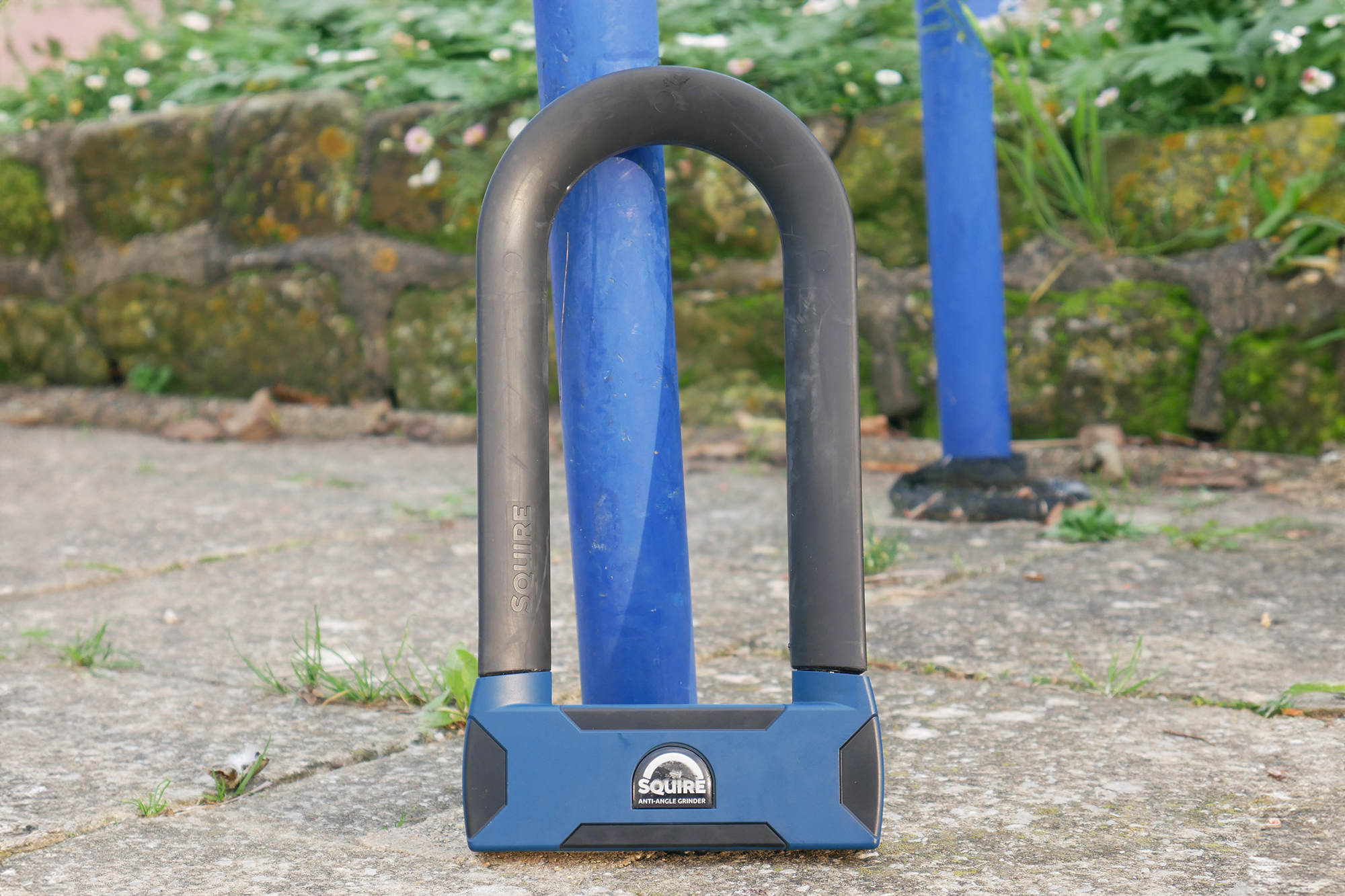
So close to being a contender, but in the end, just not close enough.
Squire Stronghold D16 Max
Our expert review:
Specifications
Reasons to buy
Reasons to avoid
Squire may not be the first name that comes to mind when considering bike locks. Yet, they are among the few bicycle accessories manufactured in the United Kingdom and have proved popular among the motorcycle community.
Firstly, the Stronghold, like the other four locks on test, passed our angle grinder test. It allowed us to cut around two-thirds of the way through during our five-minute test, which, for many, will be enough. It offers decent security, supported by its Sold Secure diamond rating.
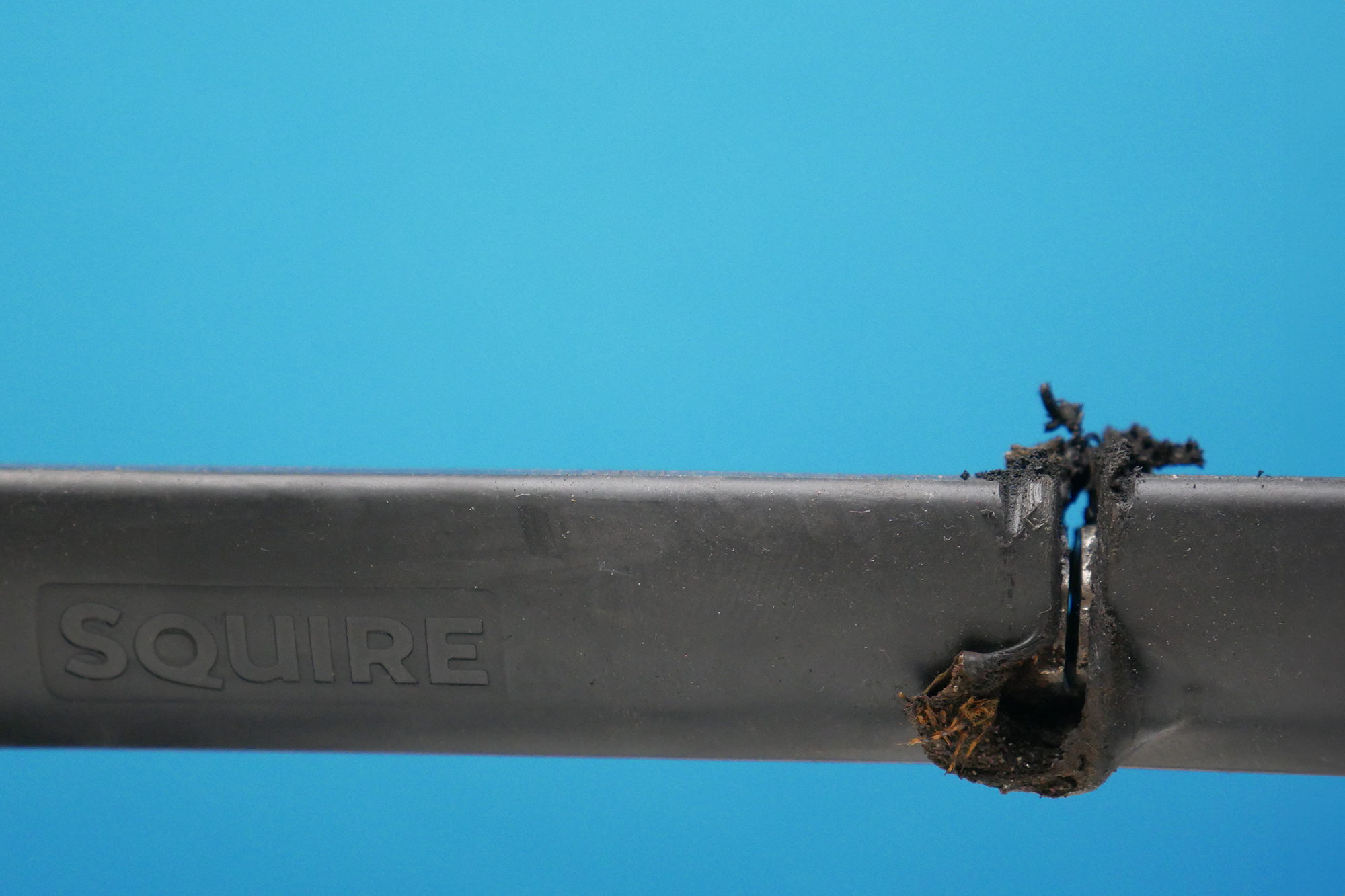
A lot of the Stronghold's beefy look come from its substantial rubber coating.
However, I was disappointed when I used the Squire Stronghold D16 Max, the second most expensive lock on test. It was clear that a significant portion of the price was spent on materials resistant to angle grinder attacks, while finer details appeared to have been neglected. This was particularly evident in the plastic cover encasing the main lock body, which rattled loosely and seemed detached from whatever was beneath, creating an impression of fragility. Additionally, there was noticeable play between the lock body and the shackle, a factor we know from Hiplok doesn’t impact security but undermines trust in the product.
While these aesthetic and tactile features don’t impact performance, one significant flaw of the D16 Max did frustrat me. Like the DX1000 from Hiplok, the D16 Max is enveloped in a considerable amount of rubberized material to protect and enhance its visual deterrence. Even with the third largest locking area at 209cm², securing my bike with it was challenging. This may be due to the Squire’s narrow shape at 9.5cm and its elongated length of 22cm, but the excessive rubberized covering and its formed shape certainly didn’t help matters.
It is a shame to be so harsh on something made in Britain; it feels so unpatriotic. In this instance, the Stronghold D16 Max is up against such strong competition and has too many compromises. Considering that for an extra £10, you can have the Hiplok DX1000, which weighs the same, has a greater reach, and outperformed Squire in the angle grinder test, it is hard to justify a recommendation here.
Specification overview
| Row 0 - Cell 0 | Security Rating | Weight | Reach | Shackle Diameter | No. of keys | Frame Mount | Cost |
OnGuard RockSoild 8590 | Sold Secure Diamond | 1.3kg/2.8lbs | 17.5cm/6.8" x 8.5cm/3.3" | 15mm/0.59” | 5 | No | Low |
Litelok X3 | Sold Secure Diamond | 2.2kg/4.8lbs | 19.5cm/7.6" x 10cm/4" | 24mm/0.9" | 3 | Yes (additional purchase) | Mid |
Abus Granit Super Extreme 2500 | Sold Secure Diamond | 2.1kg/4.6lbs | 22cm/8.6” x 10cm/4” | 27mm/1" | 2 | Yes (included) | Mid |
Hiplok DX1000 | Sold Secure Diamond | 2.7kg/ 5.9lbs | 20.5cm/ 8" x 11cm/ 4.3" | 32mm/1.2" | 3 | Yes (additional purchase) | High |
Squire Stronghold D16 Max | Sold Secure Diamond | 2.7kg/ 5.9lbs | 22cm/ 8.6" x 9.5cm / 3.7" | 16mm/0.6" | 2 | No | High |
Hypothesis
Before diving into our testing of angle grinder-resistant bike locks, I thought it best to share the context behind our testing procedure and the findings from my research, of which three key points stood out to me:
1. While browsing YouTube late one night, I was shocked at how brazen the thieves could be and that it happened in broad daylight in heavily populated towns and cities.
2. During a brief conversation with a friend—a police officer in Kent, UK—they pointed out that these thieves rarely target bikes specifically. They are regularly found to have stolen the tools used in the theft from building sites & DIY stores. This suggests many bike thieves are opportunists rather than part of a more organised crime netweork.
3. We also discussed the typical responses from both the public and the police*. According to police experiences, the public regularly step in to either try and stop the act or to start filming it. This led me to wonder how long a thief would remain undeterred before giving up and I concluded that you essentially have around a minute to steal a bike and flee.
So, how did all this inform my methodology?
* For the record, a bike theft involving an angle grinder would likely warrant a Grade 1 call-out, which requires a threat to life, use of violence, serious injury, or serious damage to property; in 2023, the reported average response time in metropolitan police areas for this grade was just under 11 minutes.

Safety First!
Methodology - How I tested
No scenario is perfect. I recognize that situations might differ if the bike were in a garage or private property, but unless the thief is sure the owner isn't home and won't be returning soon, it is almost always an opportunistic theft.
So, armed with my PPE, my risk assessment and in my controlled environment, I set out to see if you could cut an angle grinder-resistant lock in under five minutes. Which is significantly more time than my research suggested I'd need or likely get.
I conducted my testing using a popular battery-powered angle grinder model from a nationwide retailer. I also spent money on a grinder disc designed to cut specifically through metal, hoping this would give me the best chance of 'success'.
In an ideal world, I would need to make two clean cuts, either through the shackle or one through the shackle and one through the lock. This is because all of these locks feature anti-twist, anti-tampering mechanisms and hardened materials, meaning a single cut wouldn't be enough.
Angle Grinder Test Results
This chart simplifies our testing results, showing how far I could cut through the lock and how many grinder discs this required in our five-minute test. I have also outlined the shackle dimension for each lock for comparison.
| Row 0 - Cell 0 | Cut depth | Discs required | Shackle Dimension |
OnGuard Rocksoild | 0mm/0" | 3 discs | 15mm/0.59” |
Litelox X3 | 10mm/0.4" | 2 discs | 24mm/0.9" |
Abus Granit Super Extreme 2500 | 13mm/0.5" | 1 disc | 27mm/1" |
Hiplok DX1000 | 16mm/0.6" | 2 discs | 32mm/1.2" |
Squire Stronghold D16 MAX | 11cm/0.44" | 1 disc | 16mm/0.6" |
Verdict
The good news is that none of the locks in our test failed our five-minute attack. Certainly, once you start extrapolating the results, the Onguard, Litlok, and Hiplok outperformed the Abus and Squire considerably. This means the thief would still need twenty-plus minutes and half a dozen grinder discs, which is unrealistic even in a garage or low-traffic area.
The test ultimately proves that these locks are not impenetrable, but they do enough to likely slow a thief down, force them to give up and move on or flee.
My real takeaway is that despite using a quality (and brand new) grinder, high-quality grinder discs, and having the locks secured in a vice, all unlikely scenarios a thief would themselves with, I could not speed up the process and cut a lock to the point it could be removed in a time a thief might have.
Disclaimer
As part of this test, I did not attack any of these locks with other tools. Why did I not do this? In part, Sold Secure in the UK and ART in Europe do much of this for us by offering independent testing and easy-to-understand rating systems. What is worth noting is that while all the locks on this test are Sold Secure Diamond rated, there are two levels of this standard. One for bicycle locks and one for motorbike locks. The big difference between the two is the cutting/crushing force, which, given the forces involved, even at the diamond cycle level, we could not have replicated without very specialist tools. Given the disturbing trend toward using angle grinders and the lack of facilities for thieves to use a hydraulic cutting device on the street, we opted to focus on angle grinders.
Frequently asked questions about bike locks
Can you cut through an lock that claims to be angle grinder resistant?
Our testing shows that you can absolutely cut through a lock claiming to be angle grinder resistant. Given time (20-30 minutes) and a dozen grinder discs, a determined thief could remove one of these locks.
The thing to remember here, though, is that it is incredibly difficult compared to one that is not. The likely scenario is that the thief gives up and moves on if they can't remove the lock in a matter of seconds.
What is the most secure type of bike lock?
As you can see from this test, all five locks are U/D-shaped locks. This lock style is regarded as the most secure, and this is reflected in the Sold Secure ratings. First, it requires fewer joints and manufacturing processes, meaning fewer weak points can be exploited. Regarding angle grinder-resistant locks, the simpler manufacturing process allows for the use of harder and more durable materials.
What the best way to secure my bike?
It is recommended that you travel with two of the best bike locks: one for the frame and rear wheel and the other for the front wheel. However, due to axle security devices and thru-axles on high-end bikes, two locks can be cumbersome, costly, and less necessary. Alternatives include the best GPS trackers, registration, and getting your self some of the best bicycle insurance.
If you have one high-security lock, thread it through the strongest part of your bike—around the seat tube and the seat stays, if possible. This method utilizes multiple tubes and triangulation for strength, ensuring a secure lock. If the lock's reach is sufficient, it can also secure the rear wheel; a cable or chain can secure other components, like a child seat or front wheel.
For more tips, check our guide on Eight Ways to Secure Your Bike.
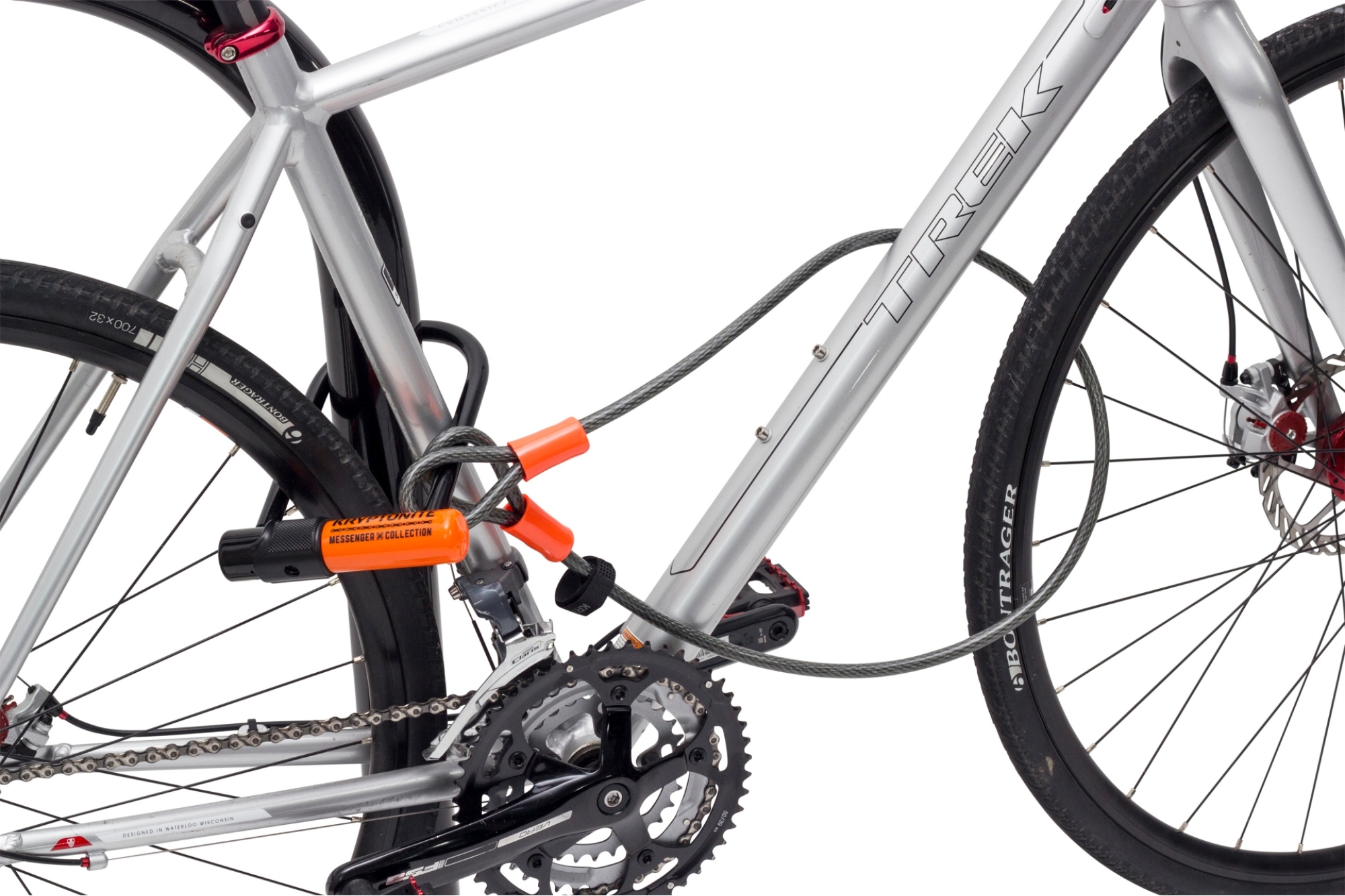
How to lock your bike up securely

Thank you for reading 20 articles this month* Join now for unlimited access
Enjoy your first month for just £1 / $1 / €1
*Read 5 free articles per month without a subscription

Join now for unlimited access
Try first month for just £1 / $1 / €1
Get The Leadout Newsletter
The latest race content, interviews, features, reviews and expert buying guides, direct to your inbox!
Like many, Matt began his bicycle industry journey on the spanners at his local bike shop. After spending his youth mountain biking, he was inspired to embrace gravel during his tenure with Evans Cycles' in-house brands, Pinnacle and Hoy Bikes. Recognising the evolving industry, Matt eagerly seized the chance to become an E-bike designer, winning several awards with the E-bike brand Cairn Cycles.
These days, Matt is likely to have a toddler sitting shotgun or off the beaten track somewhere on the South Downs.
-
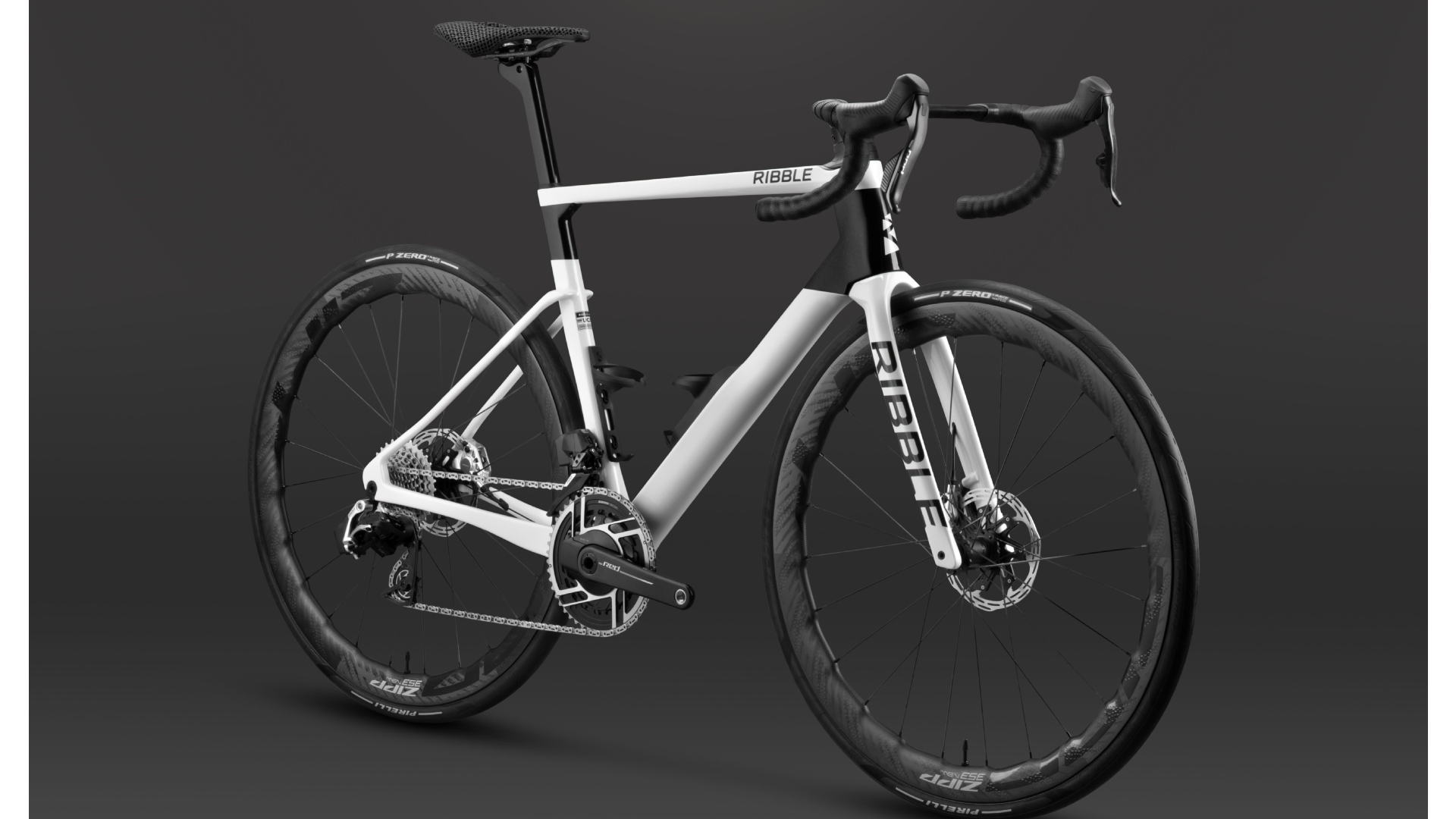 A new ultra fast road race bike, designed for potholes. The Ribble ULTRA-RACE
A new ultra fast road race bike, designed for potholes. The Ribble ULTRA-RACERibble's new flagship race bike underwent real-world testing on UK roads: the result promises better stiffness, and compliance...
-
 ‘I didn’t own a gravel bike and hadn’t ridden more than 20 miles in 10 months: How I survived a multi-day off-road event on just 6 weeks of training
‘I didn’t own a gravel bike and hadn’t ridden more than 20 miles in 10 months: How I survived a multi-day off-road event on just 6 weeks of trainingFive days of challenging gravel riding in tropical heat on almost zero training – what could go wrong?